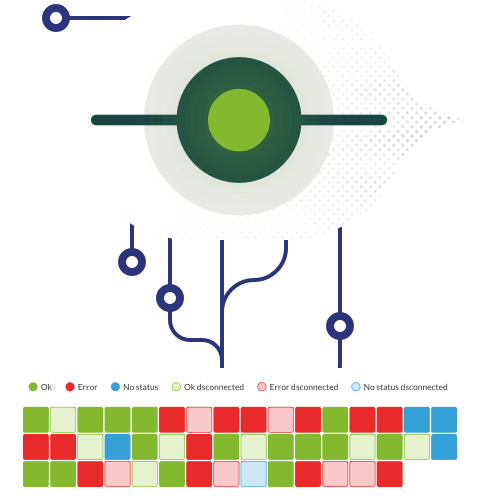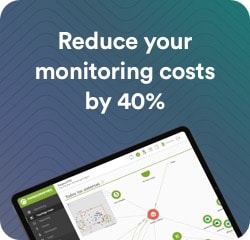Sections
- What Is IT Change Management?
- The Difference Between Change Management and Release Management
- How Does IT Change Management Work?
- The IT Change Management Lifecycle
- The Two Sides of Change in IT
- Change Management in ITSM and the Service Desk
- Change Management in Project Management
- Security, Compliance, and Challenges in IT Change Management
- IT Change Management Methodologies
- Change Management in Modern IT Environments
In it, we will explore the change management lifecycle, methodologies, examples, and tools to help you navigate a river full of rapids and rocks.
What Is IT Change Management?
What is faster—light or changes in technology? Whether driven by security or competitiveness, change in IT is constant and lightning-fast. IT change management refers to how organizations plan, implement, and control these changes in their systems, processes, technologies, or IT infrastructures.
The goal is to minimize risks and ensure that changes are carried out efficiently, without negatively impacting SLAs.
Put simply, it is a structured process that ensures any technological modification (new software, updates, configuration changes, etc.) is performed in a controlled and well-documented way, so that:
- It does not disrupt services or trigger errors in the countless moving parts of an organization’s IT infrastructure.
- It does not compromise security in the face of new threats, vulnerabilities, or regulatory changes.
- It keeps us ahead of the curve. Those who manage and implement change effectively gain advantages that make the difference between soaring and crashing in increasingly competitive environments—where the winner often takes all, leaving little for the rest.
The Difference Between Change Management and Release Management
A quick clarification to distinguish between IT Change Management and Release Management.
Release Management focuses on planning, scheduling, and controlling the deployment of new versions of software, hardware, or services. In that sense, it is just one component of overall IT Change Management.
Change Management, on the other hand, is concerned with controlling and overseeing any modification to IT systems, processes, or infrastructure, not just new releases.
How Does IT Change Management Work?
Change in IT is a broad concept that covers:
- Technological changes: such as software or hardware updates, cloud migrations, or the implementation of new tools…
- Process changes: modifications in workflows, improvements in ticket or incident management, or the adoption of new methodologies like Agile or DevOps…
- Infrastructure changes: server or database configurations, network security updates (firewalls, access policies, etc.).
- Organizational changes: team restructurings or staff training in new technologies and processes fall under organizational change management.
This means change managers face two very different challenges:
- Technology, which evolves by the second.
- People, who—contrary to Heraclitus—are often the slowest to change.
As you can see, we are opening the door to a far more complex reality than it first appears. That is why it is best to approach it methodically.
The IT Change Management Lifecycle
August 1st, 2012 started like any other lazy summer morning. Knight Capital, the largest trader of U.S. equities, was getting ready to move its $21 billion in daily market volume…
But everything changed with a single click.
That morning, they rolled out a change to their trading software across eight servers. However, there was no plan, no written process, and no IT change management in place. The deployment was done manually, and the engineer responsible forgot to copy the new code to one of the servers.
There was no second engineer to double-check the work, nor any alert system in place to detect discrepancies between the servers. And when the markets opened, so did the floodgates to disaster.
The software began executing frantic buy and sell orders, racking up millions in losses every second.
One click. One morning. One change that ended with Knight Capital being sold off at a bargain price to a competitor.
That is what happens when IT changes are not managed according to best practices. And while there are several frameworks available (which we will explore later), this is the natural lifecycle of a change.
Change Request
Every change starts with a reason—such as the continuous improvement of processes. For example, the development team might request a cloud migration. Or the trigger could be an external requirement, like complying with ISO 27001 cybersecurity standards.
Change Evaluation and Alternatives
At this stage, key IT change management concepts come into play—most notably, the CAB (Change Advisory Board). The CAB evaluates, prioritizes, and approves proposed changes, and is typically composed of:
- The Change Manager, who has ultimate responsibility for the change.
- Technical staff involved in the change—such as network administrators, cybersecurity teams (if relevant), etc.
- Service or department owners directly affected by the change. For instance, if the company plans to implement a new CRM, the customer service lead should be part of the CAB, offering user-focused insights (which the tech team will likely ignore).
- Other key stakeholders. In the CRM example, the sales director might also join the CAB to assess the broader impact of the change on the company’s sales processes.
The CAB identifies potential risks (latency, costs, affected processes…) as well as desired outcomes.
Change Approval or Rejection
If approved, the change may be authorized in full, partially, or with conditions—for example, requiring specific tests to be completed and certain objectives to be met beforehand.
Change Planning
This step outlines the tasks to be performed, timelines, responsible parties, and best practices to ensure minimal disruption to business operations.
For instance, this is where a change window would be defined—like scheduling the deployment for 1 a.m. on a Saturday, when traffic to the affected website is lowest. Or, if the change involves critical systems, tests might be run in a staging environment or using advanced change management techniques such as a digital twin.
In that case, we would build a virtual replica of our systems, apply the change to it first, and observe the outcome. Similarly, we’d establish a rollback plan so that, if things go wrong, we can “hit Ctrl+Z.”
The ITIL framework combines these evaluation, approval, and planning steps into one phase called “Evaluation and Planning.” While this guide follows ITIL as a reference, we’ve broken it down into three components for greater clarity.
Change Implementation
This is simply the execution of the planned actions—bringing the change to life.
Change Review
When Napoleon said that no plan survives contact with reality, he wasn’t talking about IT—but he might as well have been. That’s why this phase is essential to:
- Ensure the change has not caused unintended side effects.
- Confirm it achieved the intended goals using appropriate metrics (which we’ll cover later).
Documentation
If the change is successful, it should be properly documented. For example, if services were migrated to the cloud, the CMDB (Configuration Management Database) must be updated with the relevant information.
The Two Sides of Change in IT
Now that we have explored the change management lifecycle, it is important to understand that a significant portion of the external side of change comes from users—through incidents and service requests.
On the other hand, much of the internal change originates from the development of our own projects.
That’s why it is crucial to integrate and automate both as much as possible. This is where the Service Desk plays a key role, as it will handle many externally driven changes, while project and business process management tools will drive much of the internal change.
Let us take a closer look at both sides.
Change Management in ITSM and the Service Desk
IT change management is a core process within ITSM (IT Service Management) and plays a critical role at the Service Desk, the main point of contact for users and the entryway for many changes, often triggered by error resolutions or process improvement requests.
According to the ITIL framework, changes can be classified as:
- Standard: low-risk and routine, such as renewing an SSL certificate.
- Normal: planned but more complex changes with significant impact, requiring review and approval by the CAB.
- Emergency: unexpected and urgent, such as patching a newly discovered vulnerability.
Since many changes originate from user input, it’s essential to automate wherever possible—by integrating with ticket management systems that help streamline and track those changes.
Change Management in Project Management
The progress of IT projects inevitably drives change—making it essential to incorporate robust change control into project management as well.
The Agile Manifesto says: “Welcome changing requirements” (though that may not reflect how it feels in daily practice). In Scrum, the product backlog defines those changes, which must be prioritized by importance and broken down into smaller, manageable tasks when too large.
That said, Agile change management also adheres to the principle of “protecting the sprint.” So when a change appears in the sprint backlog, we don’t rush to implement it. Instead, we evaluate it—and often, only emergency changes are introduced mid-sprint, while non-urgent ones are deferred and integrated into the next sprint.
In this context, DevOps and automation are crucial allies. CI/CD pipelines (such as Jenkins or GitLab CI) enable fast, iterative deployment of code changes. Meanwhile, Infrastructure as Code tools like Terraform or Ansible ensure that every change to servers or networks is traceable and reversible. Even complex changes can be handled with the agility demanded by frameworks like Scrum.
At the end of the day, IT projects and home renovations have a lot in common—those “minor adjustments” tend to multiply timelines and budgets. If we don’t manage that flow of changes carefully, the schedule can stretch beyond the known universe.
Security, Compliance, and Challenges in IT Change Management
In tech, we serve many masters. That is why change management does not just account for user requests, project needs, or external drivers (like new regulations)—it must also address a set of critical additional challenges:
- Maintaining compliance with regulations (GDPR, ISO standards, etc.). These frameworks define the boundaries within which we operate.
- Preserving security, which means the cybersecurity team must have a seat at the CAB table.
- Proper documentation of changes—both internally (knowledge base updates) and externally (for potential audits, such as NIS2). Just like any piece of software has a changelog that becomes a key reference, our internal changes must be equally well documented. Tools like Pandora ITSM can help streamline this process.
- Training and adoption, ensuring the people involved understand and embrace the change.
- Achieving objectives, which means setting clear KPIs and tracking them.
- Minimizing risk through impact analysis and having a rollback policy ready in case things go wrong.
KPIs and Metrics to Evaluate Change Effectiveness
These metrics will vary depending on the specific change, but they generally fall into two categories:
- Metrics for the Desired Improvement. If we migrated to the cloud aiming for better performance, we need to measure that and confirm it’s actually been achieved. SLAs and user satisfaction are also critical KPIs for any non-trivial change—since our ultimate goal is to enhance service and user experience, not to make changes for the sake of novelty.
- Metrics for Our Change Capability, such as:
- Percentage of successful changes.
- Average implementation time.
- Impact on service availability.
- Associated costs, etc.
We started out wanting to be technologists and ended up as jugglers—keeping too many things in the air that always feel moments away from crashing down. That feeling is common in change management, which is exactly why applying proven methodologies is so essential.
IT Change Management Methodologies
These methodologies represent the best practices for managing change in IT. The most widely used include:
ITIL
Short for Information Technology Infrastructure Library, ITIL is the industry-standard framework that underpins this entire guide. It offers a comprehensive set of best practices for IT service management, including standardized processes for evaluating, approving, and implementing changes.
ADKAR
Developed by Prosci ADKAR focuses on the human side of change. The acronym stands for the five stages of successful change adoption: Awareness, Desire, Knowledge, Ability, and Reinforcement.
This model is especially effective when changes involve adopting new technologies or ways of working, as it prioritizes user understanding and buy-in.
Kotter
Developed by John P. Kotter, this model outlines 8 steps for successful change—starting with creating a sense of urgency and continuing through communication, empowerment, and consolidation.
Like ADKAR, it’s a framework that emphasizes the human factor, which is often the most complex part of any change initiative.
Lewin
Created by Kurt Lewin, this classic model simplifies change into three key stages: unfreezing (preparing the organization for change), changing (implementing the change itself) refreezing (stabilizing the change).
Change Management in Modern IT Environments
Technology may complicate change—but it also empowers us to manage it more effectively. That is why implementing structured change processes within an IT governance framework requires specialized tools like Pandora ITSM.
This platform recognizes change as a critical core process within ITSM and applies best practices to help create, approve, implement, and audit IT changes in a structured and automated way.
That way, we avoid becoming the next Knight Capital—a cautionary tale of how not to manage IT change.
The Change Process Flow in Pandora ITSM
Pandora ITSM provides full control over the change lifecycle, enabling you to manage every stage with precision:
- Initial change request logging.
- Evaluation by the CAB and Change Manager, including approval (or rejection and/or request for more information).
- Planning and assignment of tasks, roles, and deadlines to bring the change to life.
- Logging of observations, unexpected events, and linkage with related ITSM tickets.
- Change review and closure.
- Final documentation and recordkeeping.
The best tools reflect the best practices—and Pandora ITSM incorporates the most effective, proven methods at every stage.
It also supports categorizing and managing changes as standard, normal, or emergency—in alignment with the ITIL framework.
Changes Are Like Toddlers—Look Away for a Second and Something’s on Fire
With Pandora ITSM, you always know exactly where each change stands Its full traceability ensures every detail is logged and accessible—for both internal and external audits.
It also includes features designed to make ITSM change management as easy and painless as possible, such as:
- Automation, notifications, and alerts.
- Predefined workflows to keep everything aligned with best practices.
- Templates to make routine, repetitive changes a breeze.
- Access controls and role management for proper security.
- Detailed logs to support compliance and audit readiness.
In short, Pandora ITSM lifts the heavy weight of IT change management, guiding you through the most efficient structured process while reducing errors.
Change is inevitable—but chaos is not. That is why it is essential to master proven methodologies and the tools that bring them to life, like Pandora ITSM. Anything else is like summoning Loki with a lighter every time a change is needed—which, in tech, is practically every minute.
Pandora ITSM is a balance between flexibility, simplicity and power
And above all, it adapts to your needs.









